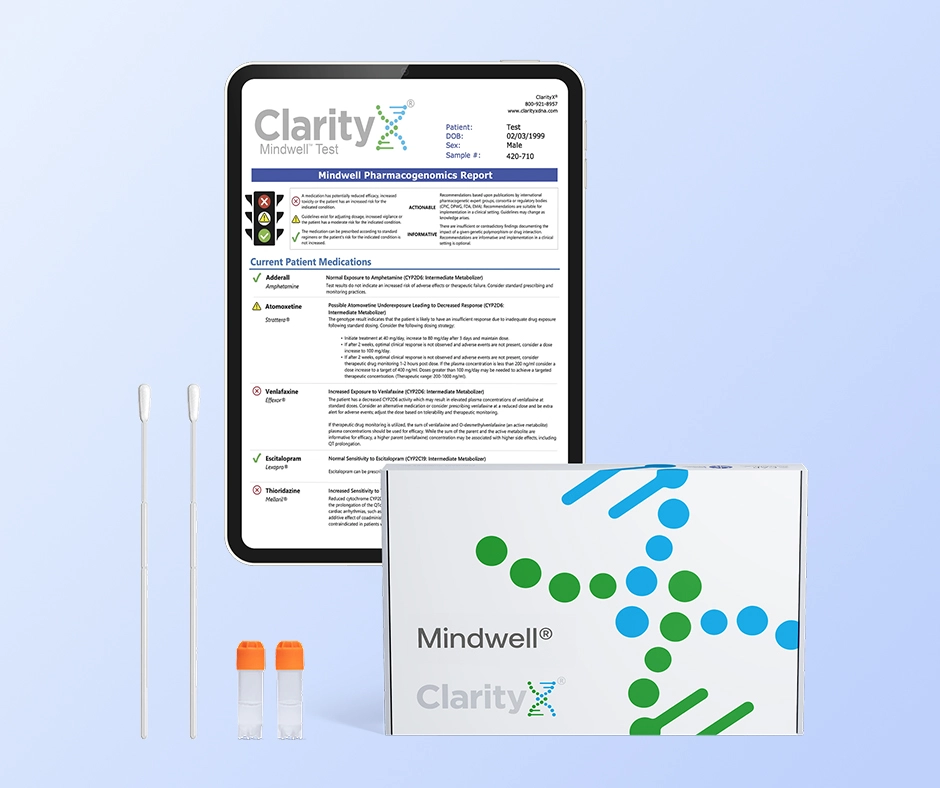Introduction
Depression, anxiety, and obsessive-compulsive disorder (OCD) are common mental health conditions that can significantly impact an individual's quality of life. Selective serotonin reuptake inhibitors (SSRIs) are a class of medications commonly used to treat these conditions. Fluvoxamine and sertraline are two SSRIs that are often prescribed due to their efficacy and relative safety. While they share similar mechanisms of action, they also have some differences in their dosage, benefits, and potential side effects. Understanding these differences can help individuals and healthcare providers make informed decisions about which medication may be best for a particular patient.
In this blog post, we will compare fluvoxamine and sertraline to help you better understand their similarities and differences. We will explore recommended dosages, mechanisms of action, efficacy, and potential side effects. We will also discuss how these medications interact with other substances and provide guidance on how to determine which medication may be best for an individual.
By the end of this article, you will have a better understanding of the key differences between fluvoxamine and sertraline and be better equipped to make informed decisions about your mental health treatment.
What are Fluvoxamine and Sertraline?
Explanation of SSRIs
Fluvoxamine and sertraline are both antidepressant medications that fall in the class of SSRI medications. SSRIs (Selective Serotonin Reuptake Inhibitors) are medications that increase serotonin levels in the brain. SSRIs work by blocking the reabsorption of serotonin. Serotonin, a neurotransmitter, is involved in regulating mood, emotions, sleep, and more. Neurotransmitters are chemical messengers that communicate between nerve cells. This helps alleviate symptoms of depression and anxiety. While the exact mechanism is not fully understood, SSRIs restore the balance of neurotransmitters, leading to improved mood.
When serotonin levels are low, you may feel down, depressed, or anxious. Low serotonin levels are known to cause sleep disturbances, and appetite or weight changes. Mood swings, anger, irritability, and aggression are also associated with low serotonin. Increasing the levels of serotonin in the body may help alleviate many of these symptoms.
When serotonin levels are too high, though, serotonin syndrome could result. Serotonin syndrome is a potentially life-threatening condition. Symptoms may include agitation, restlessness, anxiety, panic, volatile mood swings, dilated pupils, increased body temperature, increased blood pressure, sweating, flushing, and rapid heartbeat.
SSRIs can serve as a useful tool in aiding individuals with their depression. As with all medications, let your provider know all other medications you may take, including over-the-counter medicines. Multiple types of medications, including some herbals, can lead to drug interactions with medications that affect serotonin levels. Each antidepressant works slightly differently and may have different risks associated with them.
MAO inhibitors should be discontinued at least 2 weeks prior to starting an SSRI medication.
Understanding Fluvoxamine
Dosage and Administration
The FDA has approved fluvoxamine for the management of obsessive-compulsive disorder (OCD) in both adult and pediatric populations (> 8 years of age). Off-label, not officially FDA approved, fluvoxamine has also been used to help manage bulimia nervosa, generalized anxiety disorder (GAD), and post-traumatic stress disorder (PTSD).
Fluvoxamine comes in immediate-release tablets (25 mg, 50 mg, or 100 mg) given once or twice daily; or extended-release capsules (100 mg, or 150 mg), given only once daily. Extended-release capsules must be swallowed whole. Patients range in dose from 50 mg – 300 mg depending on the age of the patient and purpose of treatment.
Fluvoxamine may be taken with or without food. The extended-release capsule is recommended to be taken at bedtime.
Mechanism of Action
Fluvoxamine selectively inhibits serotonin reuptake leading to increased available serotonin in the body. Serotonin levels have been shown to affect many aspects of mental health. Fluvoxamine is extensively metabolized by CYP2D6. CYP2D6 is a gene that can vary greatly from person to person.
Benefits and Efficacy
Fluvoxamine is generally effective in treating conditions such as obsessive-compulsive disorder (OCD), though its effectiveness can vary among individuals. Fluvoxamine is considered a first-line treatment for OCD.
Side Effects and Risks
There is an increased suicidality risk, especially in children, teens, and young adults. Patients should be appropriately monitored especially at the beginning of therapy or during periods of dosage adjustments.
Common Reactions may include:
- Anxiety
- Constipation
- Diarrhea
- Dizziness
- Dry mouth
- Headache
- Insomnia
- Nausea
- Sexual side effects
- Sweating
- Tremor
- Yawning
Serious Reactions may include:
- Bleeding
- Glaucoma
- Hypomania
- Increased depression
- Life threatening rash
- Low sodium levels
- Mania
- Seizures
- Serotonin syndrome
- Withdrawal symptoms if abruptly discontinued.
Fluvoxamine is not approved for use in bipolar disorder.
Stopping fluvoxamine abruptly, or skipping doses, can lead to discontinuation syndrome. Patients report experiencing dizziness, emotional volatility, headaches, hot flashes, insomnia, or vomiting with skipping as little as one dose. It is important to work closely with your healthcare provider if this medication is being changed or discontinued.
Understanding Sertraline
Dosage and Administration
In adults, the FDA has approved sertraline for the treatment of major depressive disorder (MDD), obsessive-compulsive disorder (OCD), panic disorder, posttraumatic stress disorder (PTSD, premenstrual dysphoric disorder (PMDD), and social phobia. Off-label, not officially approved by the FDA but still used, sertraline is used to treat premature ejaculation and vascular headaches.
Pediatrics ages 6 years and up have FDA approval of sertraline for the treatment of OCD. Off-label, sertraline may be used for major depressive disorder in ages 10 and up.
Sertraline comes in once-daily tablets (25 mg, 50 mg, and 100 mg); or a solution (20 mg per milliliter) for those who have difficulties swallowing. Patients range in dose from 25 mg to a max daily dose of 200 mg depending on personal response and on purpose.
Mechanism of Action
Sertraline selectively inhibits serotonin reuptake allowing for a greater opportunity for serotonin to affect our bodies. When serotonin is released into a synapse (the gap between nerve cells) it remains available longer, effectively increasing the concentration of serotonin in the brain. Keeping the serotonin in the brain longer improves the signaling between nerve cells, believing to help with many mental health conditions.
Sertraline is metabolized in the body by multiple enzymes including CYP2B6, CYP2C9, CYP2C19, and CYP2D6; making it a medication easily affected by our genetics.
Benefits and Efficacy
Sertraline is considered one of the first-line treatments of OCD in patients aged 6 years and older. Sertraline is also considered one of the first-line treatments for major depressive disorder, generalized anxiety disorder (GAD), panic disorder, and social anxiety disorder.
Side Effects and Risks
There is an increased risk of suicidal thoughts and actions especially in children, teens, and young adults. Patients should be appropriately monitored especially at the beginning of therapy or during periods of dosage adjustments.
Common Adverse Reactions
- Agitation
- Diarrhea
- Dizziness
- Dry mouth
- Fatigue
- Insomnia
- Muscle aches
- Nausea
- Purplish spots or patches
- Sexual dysfunction
- Tremor
Serious Adverse Reactions
- Angioedema (swelling of mouth and throat)
- Bleeding
- Glaucoma
- Heart affects
- Life threatening rash
- Mania/hypomania
- Muscle damage
- Pneumonia
- Serotonin syndrome
- Withdrawal symptoms if abruptly discontinued.
Sertraline is not approved for use in treating bipolar disorder.
Stopping sertraline abruptly, or forgetting doses accidentally, can lead to discontinuation syndrome. Patients who skip doses or stop without supervision often complain of odd sensory symptoms such as a ‘zapping’ or ‘tingling’ sensation in the brain. Other discontinuation symptoms could include nausea, dizziness, difficulty sleeping, or anxiety. Working closely with your healthcare provider is important if this medication is changed or discontinued.
Conclusion
Fluvoxamine and sertraline are two options for managing mental health conditions. While both medications have similar common side effects, it's worth noting that fluvoxamine may have a higher incidence of side effects, particularly in adverse events, and it could potentially be less effective compared to sertraline.
Pharmacogenomic testing can help you and your provider determine which medication has the most benefit and least side effects for you. Knowing ahead of time can save you time, money, and heart ache.
Looking for help determining the best medication options for your specific health concern? See how ClarityX can help!
References
- DailyMed - FLUVOXAMINE MALEATE capsule, extended release (nih.gov)
- DailyMed - SERTRALINE HCL- sertraline hydrochloride capsule (nih.gov)
- fluvoxamine: Dosing, contraindications, side effects, and pill pictures - epocrates online
- https://online.epocrates.com/diseases/362/obsessive-compulsive-disorder#treatment-options
- https://online.epocrates.com/drugs/1442/sertraline
- https://pubmed.ncbi.nlm.nih.gov/15073774/
- https://www.drugs.com/comments/fluvoxamine/
- https://www.drugs.com/compare/fluvoxamine-vs-sertraline
- https://www.drugs.com/monograph/fluvoxamine.html
- https://www.drugs.com/monograph/sertraline.html
- https://www.health.harvard.edu/blog/discontinuation-syndrome-and-antidepressants-2019040416361
- https://www.mayoclinic.org/diseases-conditions/social-anxiety-disorder/diagnosis-treatment/drc-20353567





